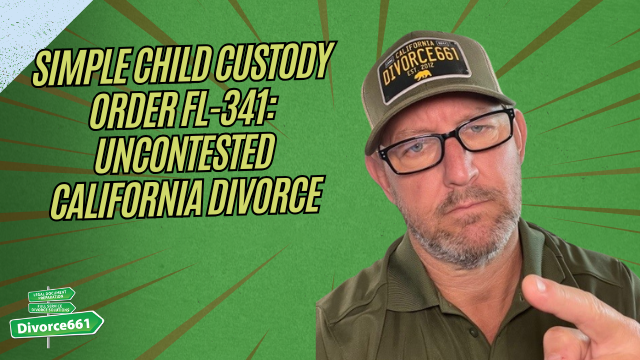How To File For Uncontested Divorce in California: Step by Step Guide
Filing for an uncontested divorce in California can seem overwhelming, but with the right guidance, the process becomes much more manageable. Tim Blankenship from Divorce661 has expertly broken down the entire procedure, walking you through each form and step necessary to file successfully. This article will provide a clear, step-by-step guide based on Tim’s comprehensive approach, helping you navigate your uncontested divorce with confidence.
Understanding Uncontested Divorce
An uncontested divorce means both parties agree on all major issues such as property division, child custody, and support arrangements. Because there is no disagreement, the process is typically faster, less stressful, and more cost-effective than a contested divorce. Filing for an uncontested divorce involves submitting the correct paperwork and following specific legal steps, which this guide will outline.
Step-by-Step Process to File for Uncontested Divorce in California
1. Gather Necessary Forms
The first step is to obtain all the required forms for filing an uncontested divorce. These include:
- Petition for Dissolution of Marriage (Form FL-100)
- Summons (Form FL-110)
- Declaration Under Uniform Child Custody Jurisdiction and Enforcement Act (UCCJEA) if children are involved
- Property Declaration (if applicable)
- Other local court forms as required
Having these forms ready ensures you can proceed without unnecessary delays.
2. Complete the Forms Accurately
Each form must be filled out carefully and accurately. Tim emphasizes the importance of following instructions precisely to avoid mistakes that could slow down the process. Pay particular attention to:
- Details about you and your spouse
- Information regarding any children
- Property and debt division agreements
Completing the forms step by step helps keep everything organized and clear.
3. File the Forms with the Court
Once the forms are completed, you file them at the county courthouse where either you or your spouse resides. Filing officially starts your divorce case. Be sure to:
- Make copies of all documents for your records
- Pay the filing fee or request a fee waiver if you qualify
4. Serve the Divorce Papers
After filing, you must legally notify your spouse by serving them with copies of the divorce papers. This step confirms your spouse is aware of the proceedings. The papers can be served by a third party, such as a process server or a friend who is not involved in the case.
5. Complete and File Financial Disclosures
Both parties are required to exchange financial information, including income, expenses, assets, and debts. This transparency helps ensure fair agreements on support and property division.
6. Finalizing the Divorce
Once all paperwork is filed and agreements are in place, you submit a Judgment package to the court for approval. If everything is in order, the court will issue a final divorce decree, officially ending the marriage.
Tips for a Smooth Uncontested Divorce
- Stay organized: Keep copies of all documents and track deadlines carefully.
- Communicate clearly: Maintain open and respectful communication with your spouse to avoid misunderstandings.
- Seek help if needed: If you have questions or complications arise, consider consulting a legal professional.
- Follow instructions closely: Small errors can cause delays, so be thorough and precise.
Conclusion
Filing for an uncontested divorce in California doesn’t have to be complicated. By following these step-by-step instructions and completing each form carefully, you can navigate the process efficiently. Remember, preparation and attention to detail are key. If you want a detailed walkthrough of each form and step, be sure to check out Tim Blankenship’s full guide, which provides invaluable insights to help you through your uncontested divorce journey.








